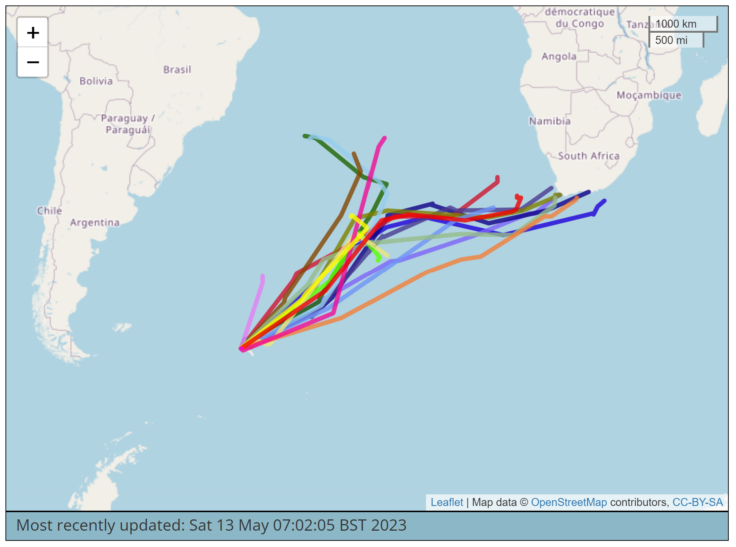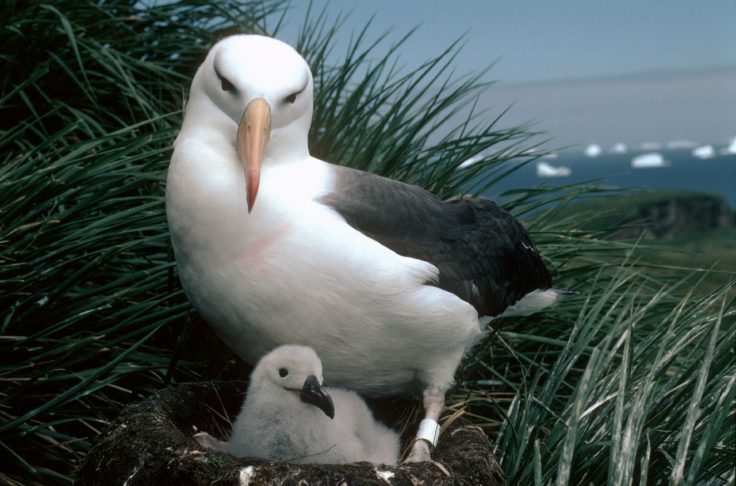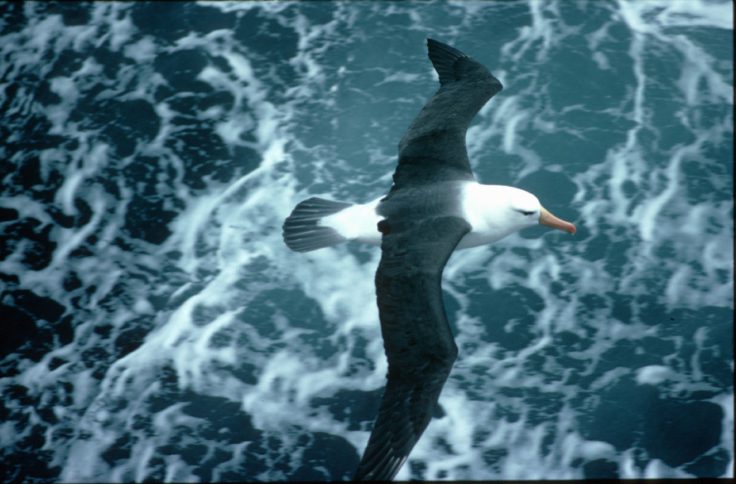Scientists are tracking a group of young black-browed albatross, who have begun their first epic journeys across the Southern Ocean. In April 2023, 26 young black-browed albatross on Bird Island in South Georgia were fitted with satellite transmitters. They are now being tracked in near real-time using the Argos system.
Albatrosses cover vast distances when foraging. When breeding, wandering albatrosses range from sub-tropical to Antarctic waters on trips of up to 10,000km in 10-20 days. In the non-breeding season, many species migrate long distances, some travelling right around Antarctica.
Explore the live map on the project page

This season's tracking project will offer crucial data to scientists working to understand the causes of the population decline of black-browed albatross. Numbers of black-browed albatross on South Georgia have halved since the mid-1980s. Until the last decade, South Georgia held the third largest population of any island group.
Although the species is not listed as globally threatened, the decrease from 100,000 pairs to 50,000 pairs is so rapid that black-browed albatross are now part of local conservation plans by the South Georgia Government.

The population of adult albatross have been affected globally by longline and trawler fishing, with birds becoming trapped by fishing equipment, or swallowing baited hooks and plastic waste. However, bycatch of seabirds has been reduced to low levels around South Georgia following the Convention on the Conservation of Antarctic Marine Living Resources (CCAMLR). Bycatch has also been significantly reduced in South African and Namibian fisheries, due to concerted efforts by national fisheries bodies and BirdLife International.
However, elsewhere in the Southern hemisphere, bycatch is still a major threat. Little is known about the travel patterns of juvenile and immature black-browed albatrosses, and ringing recoveries suggest they range more widely than the mature adults. The data from this group of recently fledged albatrosses stands to offer important new insights into the early lives of these prolific travellers.
Richard Phillips, seabird ecologist at British Antarctic Survey, said:
"It's fascinating to see where the juveniles are going in near real-time. So far, the birds that fledged successfully nearly all flew on a similar bearing to the northeast of South Georgia, and most are currently around Tristan da Cunha and Gough.
If the juveniles behave as they did in 2021, we expect most to move quite soon to waters off South Africa and Namibia. However, if any encounter strong northerly winds, it's possible they will head east into the Indian Ocean, or even as far as Australia. Only time will tell."

Since the early 1960s, BAS scientists have monitored albatross populations at Bird Island, South Georgia - home to some of the largest, and best studied, albatrosses in the world. During this time a range of innovative techniques have been developed to understand breeding and foraging ecology. The return rates of ringed birds give scientists an indication of breeding frequency and survival rates, while tiny tracking devices reveal the vast areas of ocean covered by these birds in search of food.
Pioneering satellite tracking studies by BAS scientists in the early 1990s gave the first real evidence that some albatrosses spend substantial amounts of time foraging behind commercial fishing vessels. Since then, BAS has accumulated a wealth of tracking data, used recently in one of the most comprehensive studies to date of fisheries overlap and bycatch risk across the Southern Ocean.






